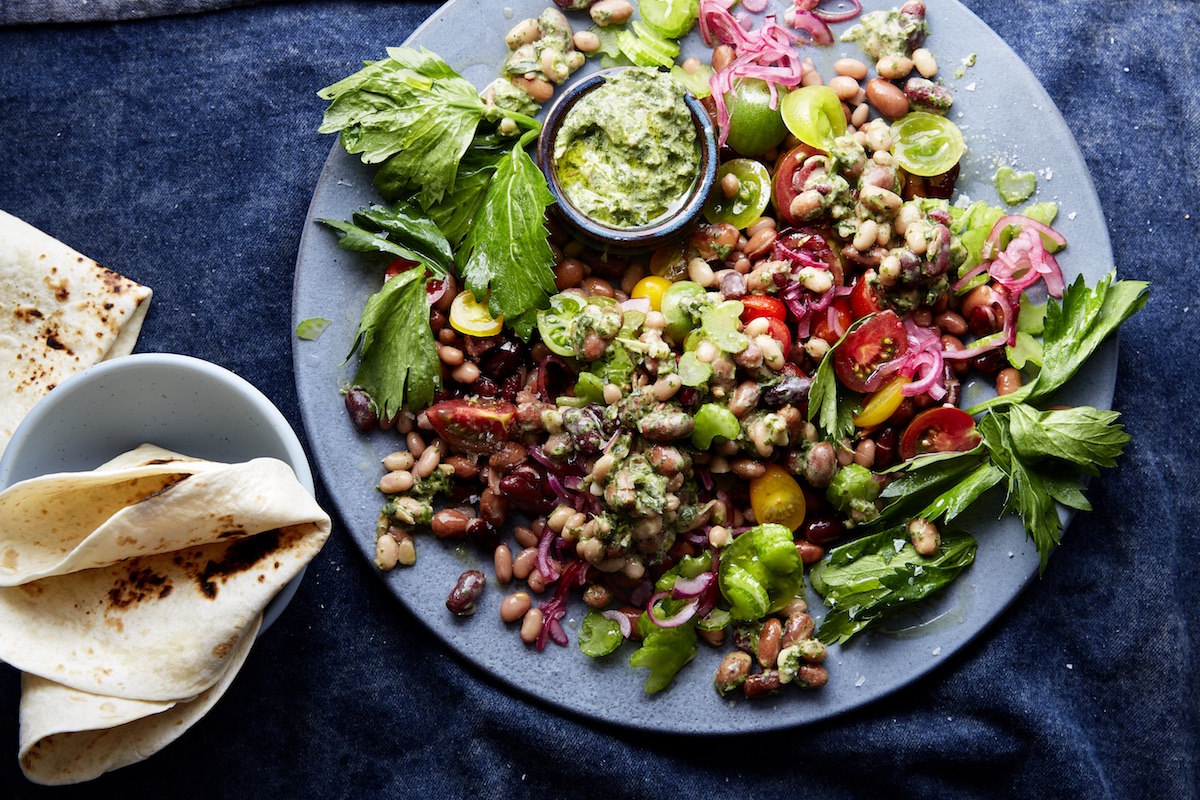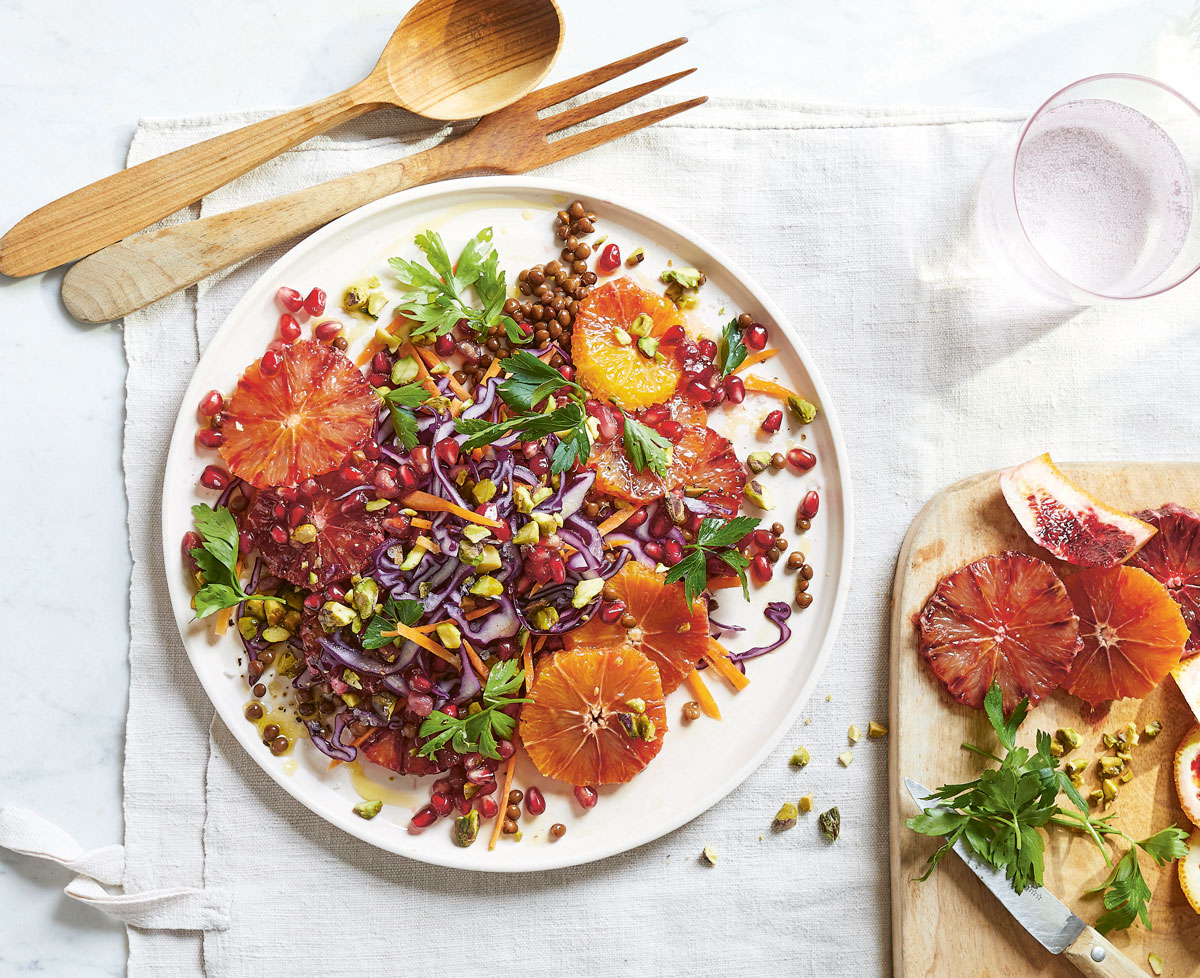5 reasons you should make friends with fibre-rich foods
Fibre isn’t just a marketing buzzword – it’s an essential part of your diet that benefits everything from your gut to your heart. Read on to pack more healthy fibre into your day.
Fibre doesn’t get enough airtime. In conversations around healthy, balanced diets, there’s a lot of emphasis on the benefits of protein and how much fat or carbs is too little or too much. But fibre rarely enters the chat – which is a shame because this underrated dietary essential comes with a bunch of health benefits, some of them rather unexpected.
Read more: 5 interesting carb-conscious suppers
What is fibre in food?
“Dietary fibre refers to the indigestible parts of plant foods that pass through the digestive system without being broken down or absorbed in the small intestine,” explains Jae Braun, a registered dietician and wellness coach and host of the Wellness Is Everything podcast. “Instead, fibre reaches the colon, where it provides various health benefits and is either fermented by gut bacteria or excreted.” There are two types of fibre, explains Braun.
Soluble fibre: Dissolves in water to form a gel-like substance, slowing digestion and helping regulate blood sugar and cholesterol. You find it in foods such as oats, beans, lentils, psyllium, flaxseeds, apples and citrus fruits.
Insoluble fibre: Helps food pass through the digestive system more efficiently, preventing constipation, and is found in whole grains, nuts, seeds and the skins of fruits and vegetables.
Good news if you’re on a calorie-controlled diet: “Unlike other carbohydrates, fibre has zero calories because it is not broken down into glucose,” says Braun.

Indian-style bean salad recipe
For you: How my spring of salads helped me eat more vegetables
Benefits of fibre in the body
You may have heard that fibre “keeps you regular”. But while it certainly helps with digestion, that’s only the start. One large meta-analysis study found that for every 10 g of increased fibre in your daily diet, your overall mortality risk drops by 10%. Here are five ways fibre benefits your body – and five excellent reasons to add it to your diet:
1. Gut microbiome health: Some fibres act as prebiotics – food for the “good” bacteria in your gut. Fermentable fibres produce short-chain fatty acids, which reduce inflammation, strengthen the gut lining, and some studies suggest it may even reduce colon cancer risk, says Braun.
2. Heart health: Soluble fibre reduces LDL (bad) cholesterol, helping to lower your risk of heart disease.
3. Blood sugar control: Another benefit of fibre is that it slows glucose absorption, reducing blood sugar spikes and your risk of type-2 diabetes, says Braun.
4. Weight management: Including fibre in your meals makes you feel fuller for longer, so you eat less overall – this helps you maintain a healthy weight naturally. “People who eat high-fibre diets tend to weigh less and have lower BMI,” says Braun.
5. Lower colorectal cancer risk: According to the World Health Organization, fibre dilutes carcinogens (compounds that increase cancer risk) in the colon and promotes healthy cell turnover, reducing colorectal cancer risk.

Tenderstem® broccoli braai salad recipe
How much fibre do you need to eat in a day?
How much fibre you need in your diet depends on your age, lifestyle and biological gender. Adult women typically need 25 g daily, while adult men need 38 g.
After the age of 50, you need less – women over 50 should aim for 21 g of fibre and men over 50 should aim for 30 g.
You’ll need more fibre in your diet if you’re pregnant or breastfeeding, or if you’re very active, as in the case of professional athletes. If you suffer from IBS or Crohn’s disease, on the other hand, you may need less fibre – chat to your health provider to get your personal recommendations.
Read more: Make these changes to improve your long-term gut health
5 high fibre foods to add to your shopping trolley
Add more fibre to your diet and you’ll start reaping the benefits sooner than you think! “The gut microbiome adapts to a high-fibre diet within weeks, improving digestion, immunity, and metabolism,” says Braun.
However, if you’re one of the many adults who average a measly 15 g of fibre a day, start increasing your intake slowly. “If you increase fibre intake too quickly, you may experience bloating, gas and discomfort,” cautions Braun. To avoid these unpleasant effects, eat a little more each day and be sure to drink plenty of water.
As for where to find your fibre, don’t just rely on your morning bran flakes – they may contain fibre, but they may also contain added sugars and preservatives. Instead, opt for diverse, high-fibre whole foods. Add these high-fibre foods to cart:

Blood orange, red cabbage and lentil salad recipe
1. Fruit: Apples (skin on), pears, berries, oranges, bananas
2. Vegetables: Broccoli, carrots, leafy greens, sweet potatoes (with skin)
3. Whole grains: Quinoa, brown rice, whole oats, wholewheat bread/pasta
4. Nuts and seeds: Chia seeds (get a whopping 10 g of fibre per tablespoon!), flaxseeds (a.k.a. linseeds), almonds, walnuts
5. Legumes: Lentils, chickpeas, black beans, kidney beans
How best to prepare your fibre?
“Cooking can slightly alter the structure of fibre, although it does not destroy it,” says Braun. “Insoluble fibre remains intact during cooking, while some soluble fibre can absorb water and become gel-like, which can actually aid digestion. However, refining grains removes a significant portion of their fibre content.”
To maximise your fibre intake, eat whole, unprocessed foods (whole grains, legumes, fruit, and veggies are best) and if you're not eating them raw, be smart with your cooking methods: overcooking – especially boiling – can lead to nutrient losses, even though fibre itself remains largely intact. Lightly steaming or roasting, however, can make fibre more digestible without significant loss. Plus, crunchy is more enjoyable than overcooked anyway!
Looking for more? Here are eight creative salads to help you get to 30 plants a week



Comments